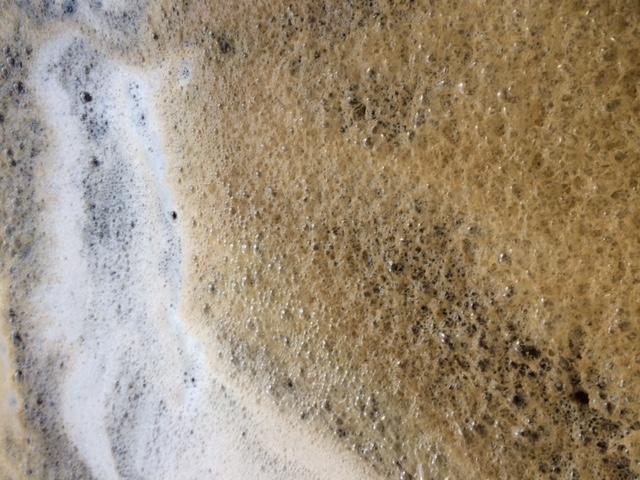Chardonnay

|
Grape juice is sometimes handled too carefully. The photo is of chardonnay juice in the press pan about halfway through the press cycle. For those of you who have not spent time in a winery during harvest, we squeeze the juice out of white grapes in a device known as a press; there are many different kinds of presses but they all have the same function--to separate the juice from the solids. This process takes a bit of time; grapes yield their juice somewhat reluctantly and the best way to get the juice out of them is to take your time. So the press squeezes gently, then tumbles, then squeezes again--it can take a couple of hours or more to run through the cycle. The juice is collected in a pan, or sump, underneath the press and then pumped into a holding vessel--tank, barrel, whatever. During this time, some folks like to protect the juice--add sulfur dioxide, dry ice, inert gas, and so on. I prefer to approach it with "benign neglect"--no sulfur, no dry ice, no nothing. It turns a bit brown, but by the time it turns into wine, the brown stuff precipitates out and the wine is nice and bright. If you want to geek out, keep on reading. The reason I prefer to let the juice turn brown is that once the brown stuff has settled out of the juice, the wine is less prone to browning. Because the substrate is gone. I have not found that the aromatics are damaged by letting the juice oxidize but this is with Chardonnay. I make no claims regarding other grape varieties. Most aromatic compounds in Chardonnay juice are bound to sugars and only released into the wine during fermentation and aging. That's why grape juice does not smell like wine. In fact, young Chardonnay wine often doesn't smell like much of anything--it's only in the winter that the aromas come out and the wines begin to show themselves. This kind of winemaking is not without risks, however. You need to have clean fruit, in good chemical balance and with minimal damage. I am fortunate to work with well farmed Chardonnay sites and seldom have to worry about compromised fruit. They pick at night and the fruit is cold when it arrives at the winery. I pick a bit on the early side before wasps and birds have much of a chance to damage the clusters, and Chardonnay in the Sonoma Coast comes in early enough that rain is seldom an issue. But even when the fruit is in good shape, there is more opportunity for things to go wrong if you go completely unprotected. I would argue that there is also more opportunity for things to go right. It feels more honest, or more transparent, to make wine this way. You need to be vigilant!
<<
previous
|
next
>>
|